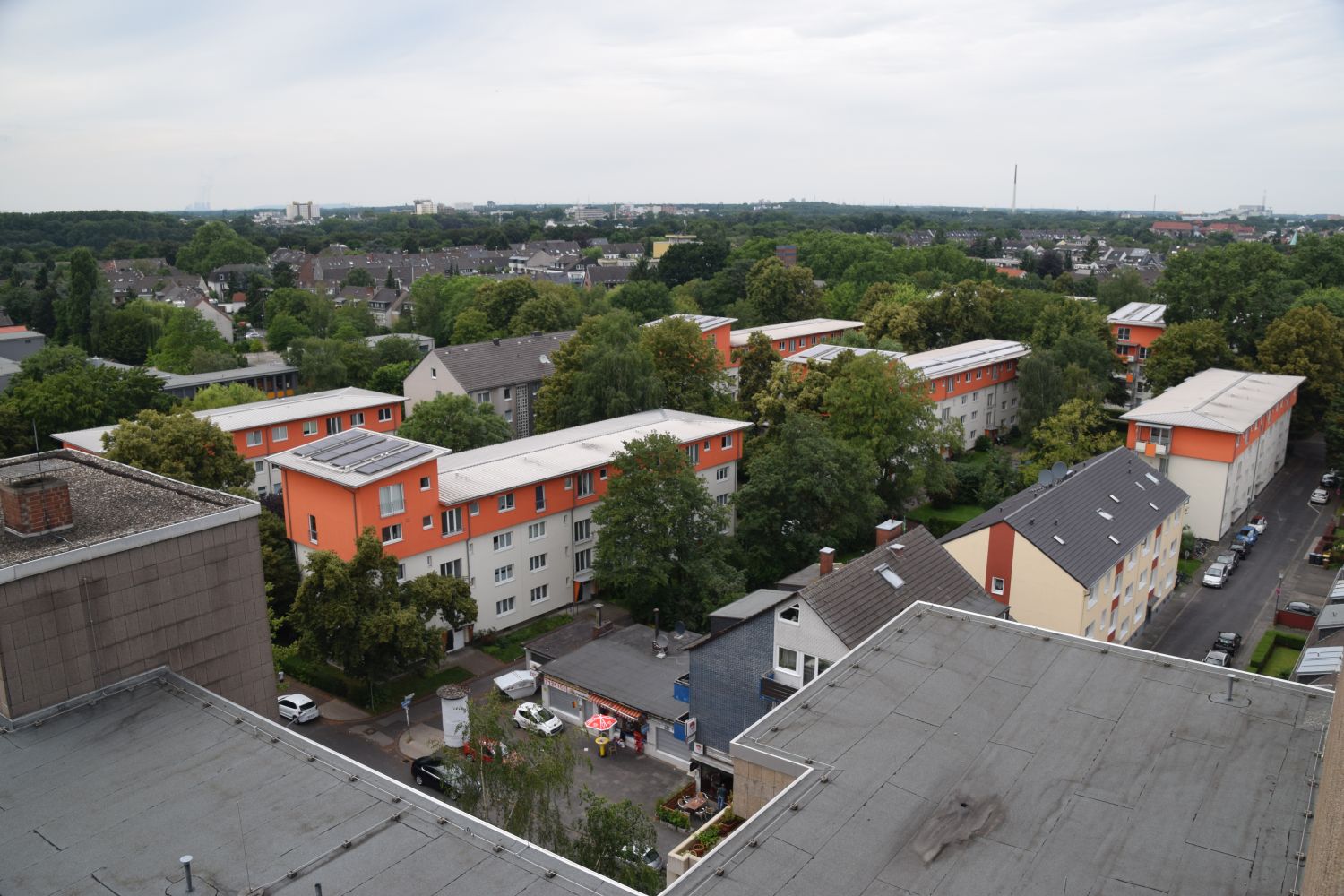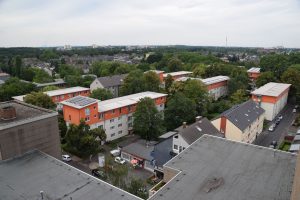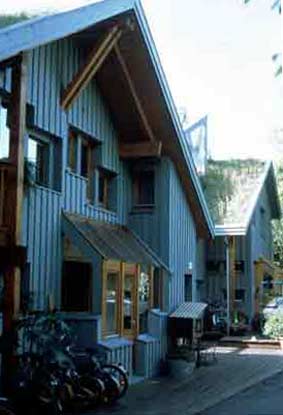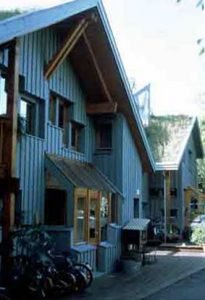 75438 Knittlingen (near Pforzheim): 100 houses. Collection of the black water via vacuum toilets (5 - 10 times less water content per flushing process) and the shredded kitchen waste (organic waste bin not applicable), which is then converted into biogas. The waste water is treated and is available again as germ-free care water that meets the requirements of the drinking water ordinance. DEUS 21 was awarded the Joseph von Fraunhofer Prize in 2007. The plant has been in operation since around 2004 and is a project of the Fraunhofer Institute IGB, Stuttgart and the FhG ISI Institute for Systems and Innovation Research, Karlsruhe.
75438 Knittlingen (near Pforzheim): 100 houses. Collection of the black water via vacuum toilets (5 - 10 times less water content per flushing process) and the shredded kitchen waste (organic waste bin not applicable), which is then converted into biogas. The waste water is treated and is available again as germ-free care water that meets the requirements of the drinking water ordinance. DEUS 21 was awarded the Joseph von Fraunhofer Prize in 2007. The plant has been in operation since around 2004 and is a project of the Fraunhofer Institute IGB, Stuttgart and the FhG ISI Institute for Systems and Innovation Research, Karlsruhe.
| Size | 100 EFHs and MFHs |
| Completion | 2007 |
| Project | New development area "Am Römerweg |
| Special features | This is the largest vacuum sewer system of its kind in Germany. The wastewater treatment plant and the bioreactor are no longer in operation after the research project came to an end. According to the FhG IGB, the site is too small for their economic operation. Joseph von Fraunhofer Prize 2007 |
| Energy | The biogas produced in the bioreactor is used by a CHP unit. The electricity is used for the operation of the water house as well as for the pumps, surplus energy is fed into the public power grid. |
| Water | Purification and use of rainwater and recycling of wastewater from the connected households. Concept: Wherever possible, drinking water is replaced by treated so-called "care water". For this purpose, two water systems were installed in each apartment. The drinking water line leads to the kitchen. In the bathroom, garden, cellar and garage, on the other hand, maintenance water pipes have been installed. Around 300 m3 of rainwater is collected in several cisterns.
The black water is collected via vacuum toilets (5 - 10 times less water content/flushing process). Likewise the shredded kitchen waste (organic waste bin is not applicable). Everything is brought together in a bioreactor and converted into biogas. Valuable phosphate and nitrogen from the wastewater can be filtered out by this process and returned to the material cycle to form an agriculturally usable fertilizer salt. The filtered remaining wastewater is further treated and is then available again as germ-free care water, in accordance with the requirements of the drinking water ordinance. |
| Development | Decentralised wastewater system as a model project. |
| Stakeholders | Project of the Fraunhofer Institute FhG IGB, Stuttgart and FhG ISI, Karlsruhe. The research project ran from 2003 - 2010. |
| Promotion | Research funds from BMBF - Federal Ministry of Education and Research |
| Links | www.igb.fraunhofer.de/...deus21-konzept.html |
| sdg21 entry | www.sdg21.eu/db/deus21 |
Last Updated: May 4, 2020
Similar projects on sdg21:
All planning agency project(s): ; City region: ; Country: Germany; Bundesland: Baden-Württemberg; Characteristics: Village; typology: Settlement; Thematic: Biogas plant, Model settlement, Sustainable water concept, Rainwater infiltration, Resource-efficient construction, Vacuum toilets








